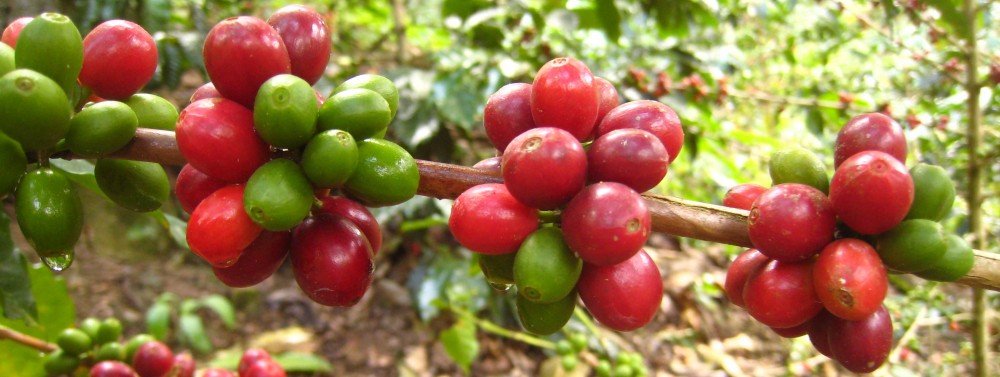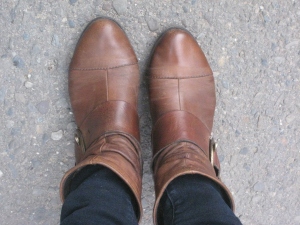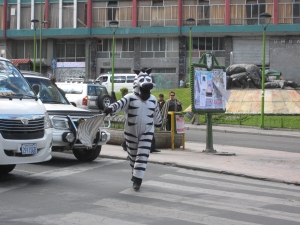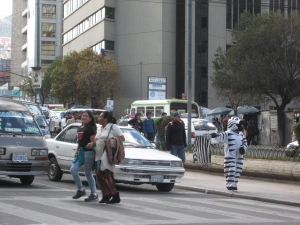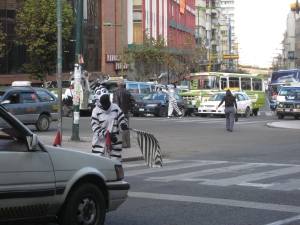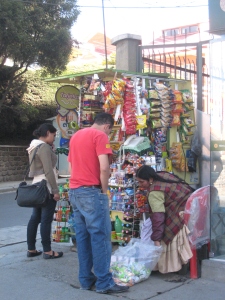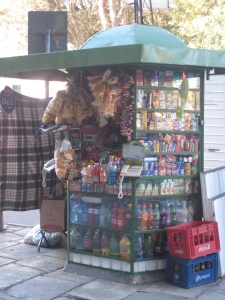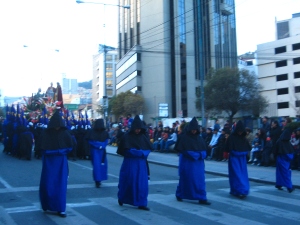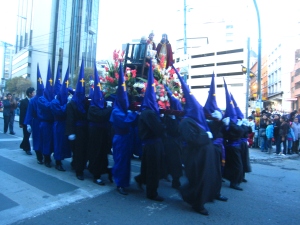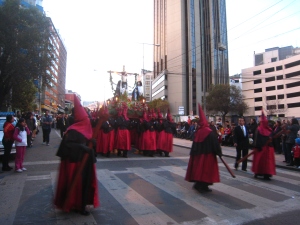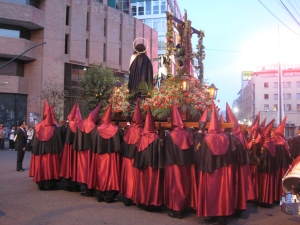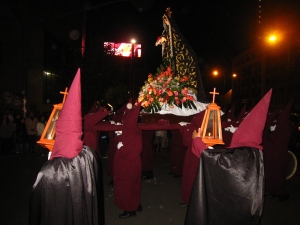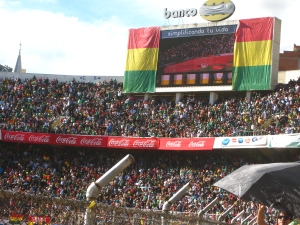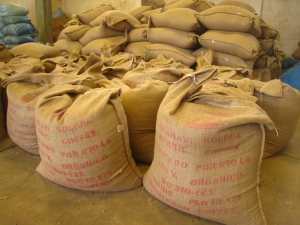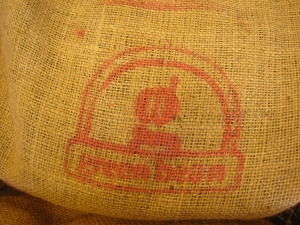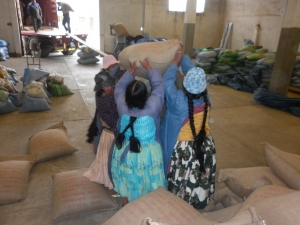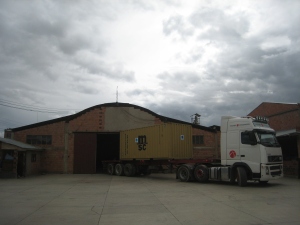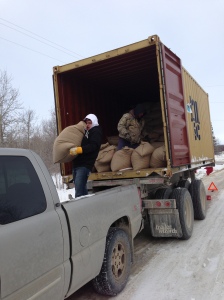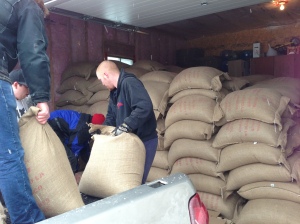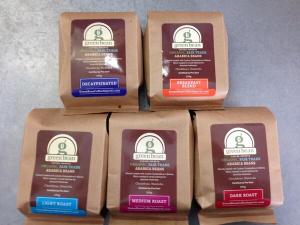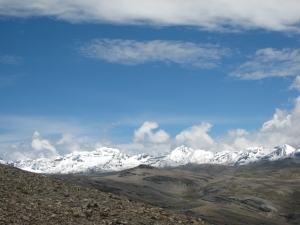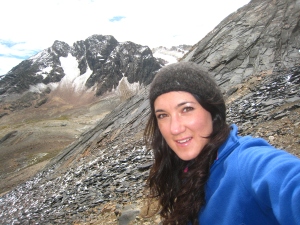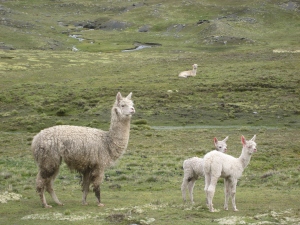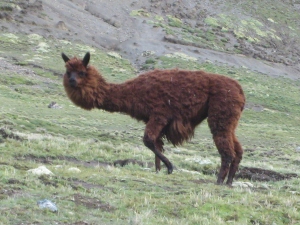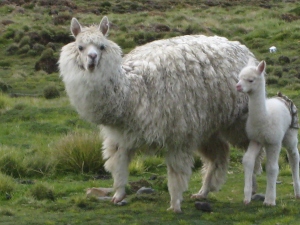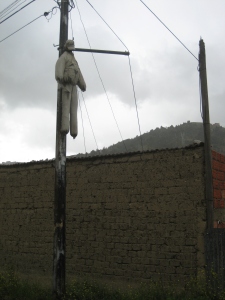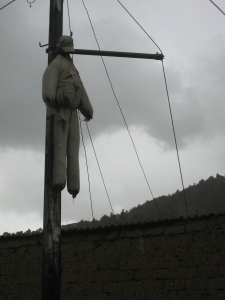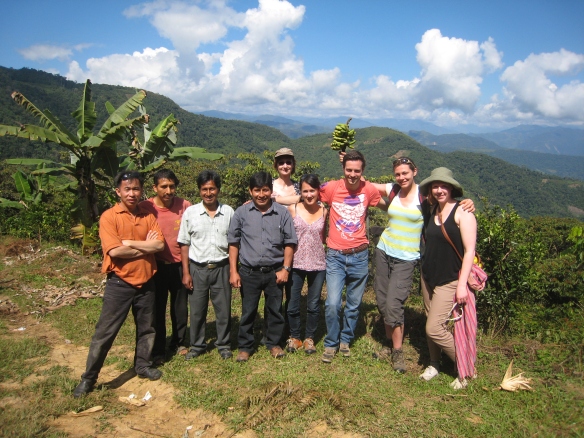
From L-R: Lay Yong Tan, Fidel Palle, Walter Callisaya Michel, Mario Condori Palli, Anne Winship, me, Jean-François Leduc, Erin Cochrane and Alix Reid
Rounding off my Crossroads’ mandate with a week as inspiring and motivating as the one I have just experienced, is truly a gift. From April 24th – May 1st, I hosted five Canadian micro-roasters (four invitees, one self-financed), with an objective of establishing direct trade relationships. We braved Death Road, visited coffee plantations, met farmers and their families, toured facilities, cupped coffee, discussed potential partnerships and negotiated contracts.
Hailing from Quebec, Ontario, Nova Scotia and Manitoba, the group was diverse – from one micro-roaster who was enjoying her first trip outside North America, to another who has 40 such coffee-origin trips under his belt. Each had unique experiences and knowledge to offer, along with a shared passion for coffee and a commitment to direct trade. I learnt a huge amount throughout the visit and am filled with respect and admiration for the individuals I had the pleasure of hosting.
Meet the micro-roasters

Alix Reid, Green Bean Coffee Imports

Anne Winship, Bean Fair
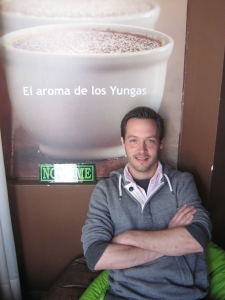
Jean-François Leduc, Café Saint Henri

Lay Yong Tan & Erin Cochrane, T.A.N. Coffee

“Caranavi province: Coffee capital of Bolivia”
Meet the producers
We visited coffee plantations at altitudes ranging from 1200m to 1700m, spending time with farmers and their families. The fair trade premiums that COAINE receives are essential for the livelihoods of these families. Beyond ensuring a fair wage, fair trade enables access to health services, education and other social services which would otherwise remain out of reach for these rural communities living in poverty.
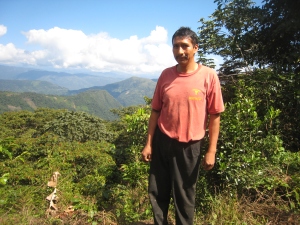
Fidel Palle, coffee farmer
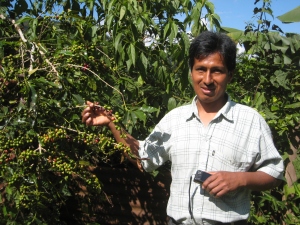
Walter Callisaya Michel, COAINE’s treasurer
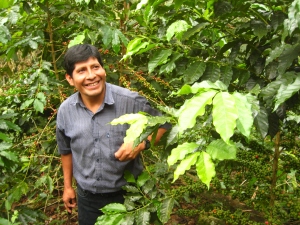
Mario Condori Palli, President of COAINE

Mario and his wife Bertha

Genero Ramos, coffee farmer
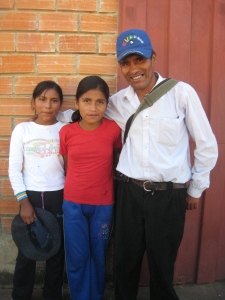
Genero Ramos with two of his daughters, Rebecca (12) and Noemi (11)

Genero with his son, Vladimir (2)
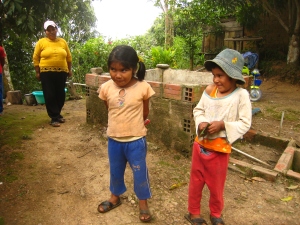
Genero`s wife Elizabeth with their other two daughters, Gilda Marilin (5) and Leonida (7)

With the Ramos family
Dialogue and discussion
While visiting the coffee production zone around Caranavi, we connected with several members of COAINE in the community of Niño Jesus. After an enormous lunch, lively discussion ensued and it was inspiring to see producers and micro-roasters learning from one other, and listening with respect and receptivity.

A warm welcome in Niño Jesus
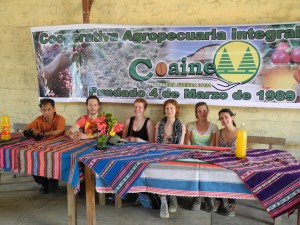

Esteban Bohórquez, founding member of COAINE, speaking to the cooperative’s progress over the years
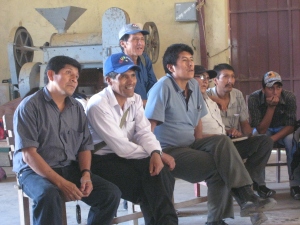

COAINE cooperative members

The little guy on the right is sporting a Justin Bieber T-shirt, especially for our Canadian cohort perhaps…

With Anastacio Mamaní Callisaya

Micro-roasters and producers in Niño Jesus
The coffee harvest
The cosecha (harvest) for coffee begins in April and continues through to August. We were able to try our hand at picking coffee cherries, as well as observe the washing, pulping, fermenting and drying processes. COAINE produces four main varietals of coffee : criolla, caturra, catuai rojo and catuai amarillo.


Coffee plants, laden with cherries
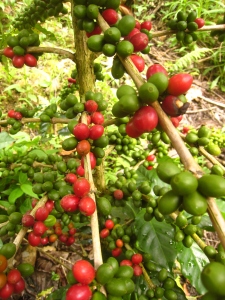


Bertha showing us how it’s done


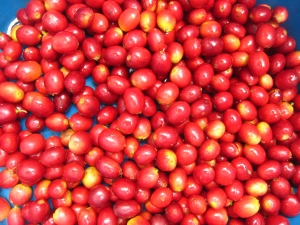
Coffee cherries (it took me a very long time to pick this small amount!)

Washing the coffee cherries

Erin, working the pulping machine
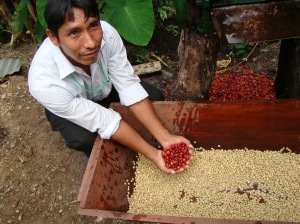
Vincente, coffee farmer, with pulped coffee beans

Picking out defective beans as the coffee dries
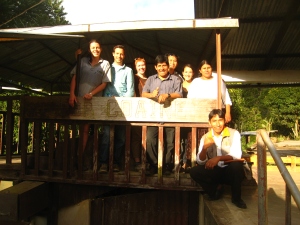
Visiting COAINE`s new wet mill facility in Muñecas (built with the aid of fair trade premiums)
Coffee cupping
Our coffee cupping session took place up at FECAFEB`s facilities in El Alto. FECAFEB (La Federación de Caficultores Exportadores de Bolivia) is the umbrella organization for all Bolivian coffee cooperatives. Coffee cupping is the method of evaluating various characteristics of a particular coffee bean. Much like wine tasting, coffee cupping is a complex process, determining taste, flavour, fragrance and aroma. By sniffing and tasting the coffee at different stages, it is possible to evaluate attributes such as balance, body, acidity, sweetness, after-taste, clean cup and uniformity.
At this early stage in the harvest, fresh coffee beans from only the lower altitudes were available for tasting. We cupped three batches of coffee beans all from the same farm: criolla, catuai rojo and a combination of the two. Extreme care was taken to treat the beans to the exact same process to produce the most accurate results. Four cups of each batch were prepared in order to identify consistency or lack thereof.
Much sniffing, slurping and silent rumination later, the merits of the coffee were discussed and the varietals revealed. Incredibly, Jean-François and Lay Yong (both certified coffee cupping judges) were able to identify which of the three batches was the mix of coffee varietals during a blind taste test. Impressive!

Coffee cupping at FECAFEB (La Federación de Caficultores Exportadores de Bolivia)


Firstly, the fragrance of the dry grains is evaluated



Next, we tested the aroma of the grains once infused with hot water

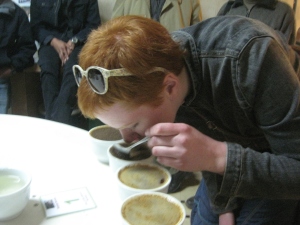
Testing the aroma again, while breaking the surface with a spoon

With the crema removed, the coffee is slurped vigorously,(with obligatory accompanying noise!) allowing for the coffee to cover the palate evenly
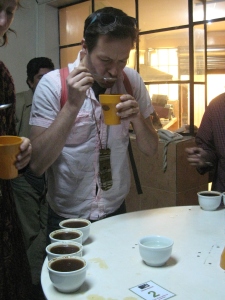
Tasting several samples of the same batch enables any inconsistencies or defects to be identified
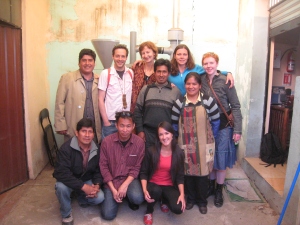
At FECAFEB, after a successful cupping session
Results and good news!
We concluded a productive week by visiting COAINE`s dry processing plant up in El Alto. Each micro-roaster had an opportunity for some one-on-one time with cooperative members, with myself and another translator present. I am thrilled to report that both T.A.N. Coffee and Café St Henri negotiated contracts with COAINE and will be sharing a container from this year`s harvest! T.A.N. Coffee is importing 220 bags (at 70kg each) and Café St Henri, 60 bags. Furthermore, both micro-roasters are collaborating with COAINE to produce high quality coffee with unique specifications, relative to their markets.
With this, I am more than delighted to realise that my Crossroads mandate has allowed things to come in a glorious full circle, that I could only dream of, seven months ago. Since Cafe St Henri is based in Montreal – with three cafés and a number of wholesale customers – I will be able to drink COAINE’s fair trade coffee only a couple of blocks from my Montreal home. Having a personal connection with the producers behind my morning coffee is a truly wonderful prospect!
Heartfelt thanks to everyone involved in the success of this visit and these partnerships. I can say with confidence that Crossroads is bridging a much-needed gap with its international development projects such as this fair trade initiative. Real change is happening. Lives are being transformed.

